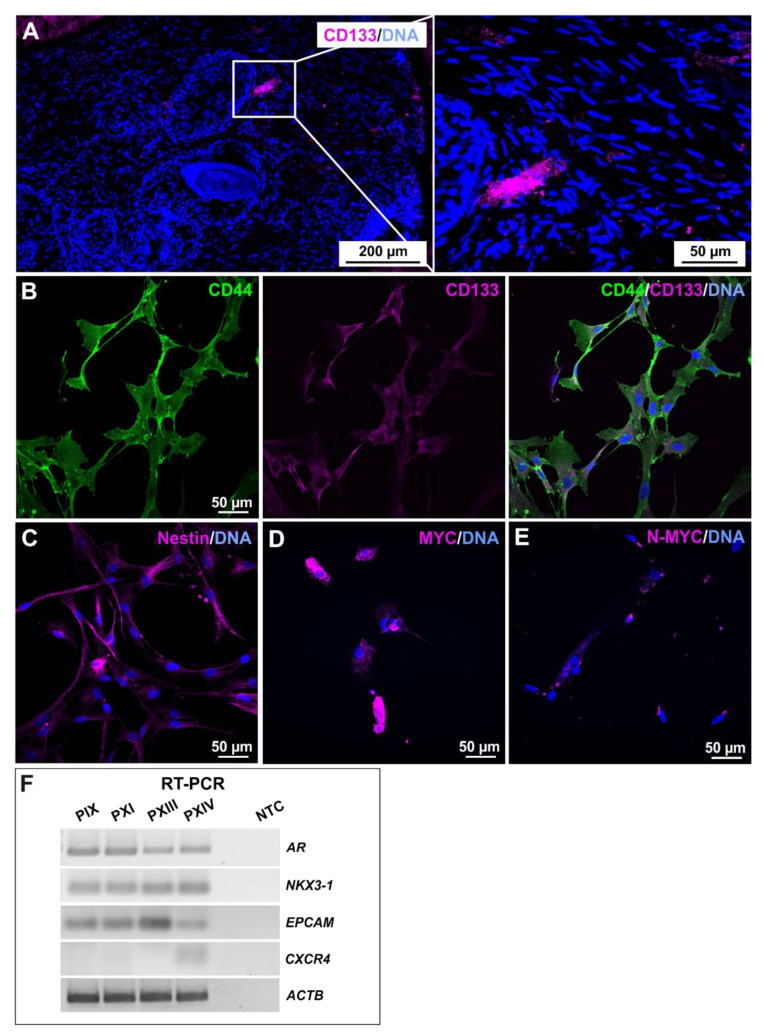Figure 2.
Characterization of stemness properties in primary prostate cancer stem cells. (A) Identification of prominin-1 (CD133)-positive cells, localized as a small group of clustered cells after immunohistochemistry of an exemplary prostate cancer section (donor PXI). (B,C) Immunocytochemical stainings of cancer stem cell (CSC) markers CD44, CD133 and Nestin in the cultured putative prostate cancer stem cell (PCSC) population of PXI. The co-expression of CD44/CD133 revealed the stemness character of primary isolated PCSCs (B), further verified by the presence of Nestin (C). (D,E) Exemplary proto-oncogene MYC and MYC family member N-MYC immunocytochemistry analyses of PIX PCSCs depicted expressions of both CSC-associated markers at the protein level. Nuclear counterstaining was performed using DAPI. (F) The further detection of prostate cancer and PCSC markers were carried out on the mRNA level after reverse-transcription (RT) PCR, whereas the androgen receptor (AR), prostate cancer-specific gene NKX3-1, and CSC-related gene epithelial cell adhesion molecule (EPCAM) were detected in each PCSC population, the metastasis-associated gene CXCR4 was exclusively detected in PXIV PCSCs. Beta actin (ACTB) served as the housekeeping gene.

